« Mosques, Mandirs, and Monasteries | Main | Darjeeling, Queen of Hill Stations »
May 20, 2005
Creating Scrap, Using Scrap
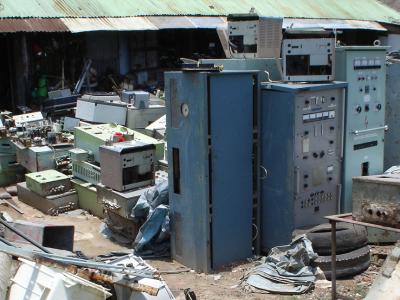
Radars and Radio Sets

Gearbox Dismantling
Driving along the road south from Comilla, as you start to near the port city of Chittagong, the stalls along the side of the road change dramatically. Instead of the usual vegetables, paan and cigarettes, basic food-stuffs seen all over South Asia, their contents are surprising to say the least. A stall full of identical western toilets. A shed with huge steel cylinders outside. Engine parts, on a mighty scale. Radios and radars. Gearboxes much bigger than the biggest railway locomotive. Where could it all have come from?
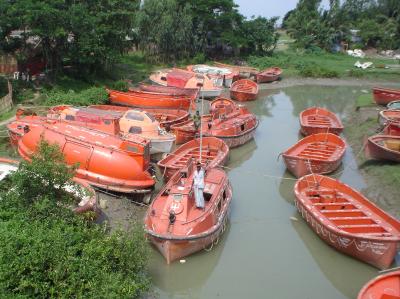
A Fleet of Lifeboats
The bus draws level with a small river inlet, which is full of lifeboats, as if some marine disaster has just taken place, but where are all the passengers? A clue comes quite shortly, as way in the distance, peeping out above the trees, a large super-tanker is sighted. No, it has not drifted in too close to shore but was beached here on purpose, for this area of the coast is famous for its ship-breaking industry. Old and worn out ships from all over the seven seas are floated onto the sands at high tide, and then taken to bits piece by piece, to be recycled in different ways.

Supertanker Ahoy
The obviously re-useable items are taken off whole, to be sold to anyone who needs a monster searchlight, 10,000 teaspoons, or a portrait of the father of the Turkish nation, Kemal Attaturk. The huge engines are dragged out in sections, to dismantled by hand, whilst the ships themselves are attacked by an army of men with hacksaws and cutting torches - from a distance they look like ants swarming over the body of some huge dead animal.
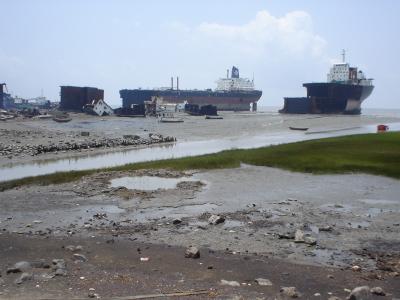
Ship Breaking - 1
I went to visit some of these 'ship-cutting yards' as they are locally known, and it was fascinating to watch as huge steel plates or propellor shafts were cut free to fall on the sands, then to be dragged up the beach by monster winches, and loaded on to the backs of lorries. Although the yard owners were happy for me to wander around and watch the work, photos were not allowed, due to the hornets nest stirred up by some journalists eager to write an expose of coastal pollution. The two photos here were taken outside the yards, from a distance.
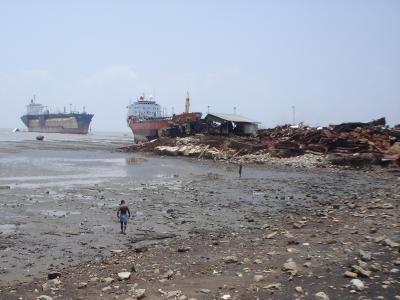
Ship Breaking - 2
Chittagong is a noisy and crowded city with few attractions to recommend for the tourist. After visiting the shipyards, there was little else to keep me, so I headed north again, this time to the hills and tea gardens of Sylhet.

Chittagong Station
I went by rail for a change. The Bangladesh railway network is quite old, but does its job fairly adequately, and maintains a number of regular routes that offer long distance travel at surprisingly cheap rates. As elsewhere in the sub-continent, a stop at a station means an assault on the train by an army of vendors, selling all manner of goods and foodstuffs, such as peeled cucumbers, green coconuts, ripe bananas, bombay mix, roasted peanuts in their shells, fresh mangos, and a dozen other interesting things to keep the traveller fed and watered along the way.

Cucuumber Sellers
There had been quite a bit of rain over the last few days, as the monsoon was starting, and frequent depressions would roll over the country bringing torrential downpours, ear-splitting thunder claps, and startling amounts of lightning. So easily, with just a few days of rain, the fields began to flood, ruining crops and isolating homes and communities. It is frightning how quickly this can happen in Bangladesh; so flat and low-lying over the whole southern coastal plain. Of course its just the beginning of the monsoon season - much more is to come for this beleaguered country and its population.

Flooded Fields
On to Sylhet, a pleasant smaller city in the north of the country. It is famous for its tea, also for its emigrants who staff a thousand Indian restaurants all over England and beyond. Many return to this area when they retire, and build large houses for themselves and their families.
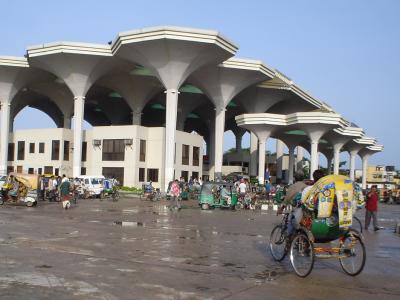
Sylhet Station
Sylhet railway station is an impressive structure, with a series of mushroom-like canopies towering over the station buildings themselves. Nearby, crossing the Surma River, is the Kean Bridge. It has such an incline on either side that the bicycle-rickshaw drivers can't manage the ascent themselves, and employ extra pushers at 1 taka a time. Once over the top, their passengers hope that the brakes are working as they come rushing down the other side, straight into oncoming traffic.
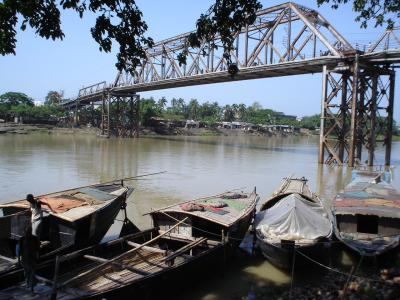
Kean Bridge

Denture Stall
I found this stall on the roadside, for the benefit of all of those who need dentures. This guy will make a set of false teeth for you: actually, that is not strictly true. Whilst the base is made by hand, the teeth used are real ones, extracted from other people, most presumably alive? That pile on the right of the table is his stock of teeth - I presume you choose the ones that match your own the closest.
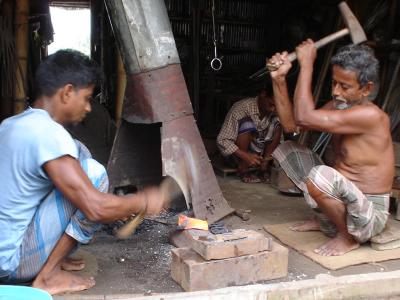
Sylhet Blacksmiths
This diary-entry started with the generation of scrap metal. It finishes the other way around, by using scrap metal to create something new. As many of you know, I've always been interested in blacksmithing, and have been building a small forge in my workshop and getting tools together for the last few years. Whilst wandering down a back-street near the river in Sylhet, I came across a whole row of blacksmiths: trades often tend to stick together like that in Asia and the Middle East. I spent a while watching what they were up to, and then at one particularly friendly family group of father and two sons, I commissioned them to make me a knife and a pair of tongs, and sat watching the whole process!! It took them about an hour and a half all together: the knife was made from part of an old lorry-spring, with a wooden handle, and a curved blade about 8" long. It is properly tempered, and very sharp. The tongs are made from a length of concrete-reinforcing rod, with a rivetted joint in the middle. Total cost: 300 taka (about 2-40 in UK money) though I gave them an extra 200 to say thank-you. They were very touched that a foreigner should spend time interested in their craft, and my presence attracted a huge crowd as well, all wondering why I was there, and then watching the work themselves, though the blacksmiths didn't let it put them off, apart from to order someone to run to get cups of tea at frequent intervals! It was a privilege to watch these craftsmen and I learned a lot; an amazing morning - about the best one I can think of.
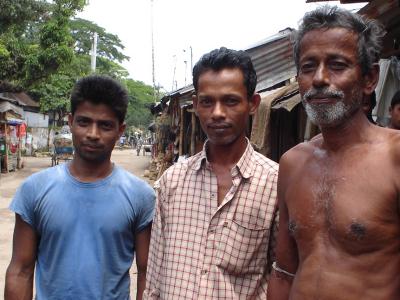
Father and Two Sons
Posted by travellingtim at May 20, 2005 07:15 PM
